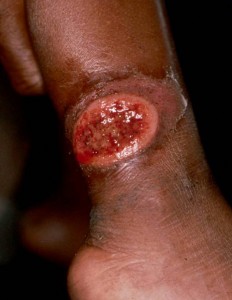Normal
Saline Vs Lactated Ringers in Hemorrhagic Shock
Choice of crystalloid as a
resuscitation fluid in the face of known hemorrhagic
shock remains one of the most highly debated topics in the trauma literature
at this time. While many clinicians consider lactated Ringer’s and normal
saline interchangeable, they are not.
Multiple studies in the swine model
compare the use of various crystalloid solutions, focusing on lactated Ringer’s
solution and normal saline. The swine model demonstrates that if shock is
induced and maintained for 30 min, followed by resuscitation with either normal
saline or lactated Ringer’s solution, the animals resuscitated with Ringer’s
lactate have better improvement in markers of shock, pH, and extracellular lung
water. In this study neutrophil activation contributes to cellular damage.
Other studies support the neutrophil activation phenomenon; dextran is the
biggest activator, followed by normal saline and then lactated Ringer’s
· Phillips CR, Vinecore K, Hagg DS, Sawai RS,
Differding JA, Watters JM, Schreiber MA. Resuscitation of haemorrhagic shock with
normal saline vs. lactated Ringer’s: effects on oxygenation, extravascular lung
water and haemodynamics. Crit Care. 2009;13(2):R30. Epub 2009 Mar 4.
·
Scultetus A, Alam HB, Stanton K, et al. Dextran and
Hespan resuscitation causes neutrophil activation in swine after hemorrhagic
shock. Shock. 2000;13(Suppl):52.
Lactated Ringer’s, as a resuscitation
fluid, yields less acidosis and less coagulopathy than seen with similar
volumes of normal saline
·
Todd
SR, Malinoski D, Muller PJ, Schreiber MA. Lactated Ringer’s is superior to
normal saline in the resuscitation of uncontrolled hemorrhagic shock. J Trauma.
2007;62(3):636–9.
Normal saline causes a well-recognized
metabolic hyperchloremic acidosis; patients resuscitated with lactated Ringer’s
do not achieve such levels of acidosis. Furthermore, normal saline-resuscitated
patients demonstrate more blood loss than those resuscitated with lactated
Ringer’s
· Kiraly LN, Differding JA, Enomoto TM, Sawai
RS, Muller PJ, Diggs B, Tieu BH, Englehart MS, Underwood S, Wiesberg TT, Schreiber
MA. Resuscitation with normal saline (NS) vs. lactated ringers (LR) modulates
hypercoagulability and leads to increased blood loss in an uncontrolled
hemorrhagic shock swine model. J Trauma. 2006;61(1):57–64. discussion 64–5.
